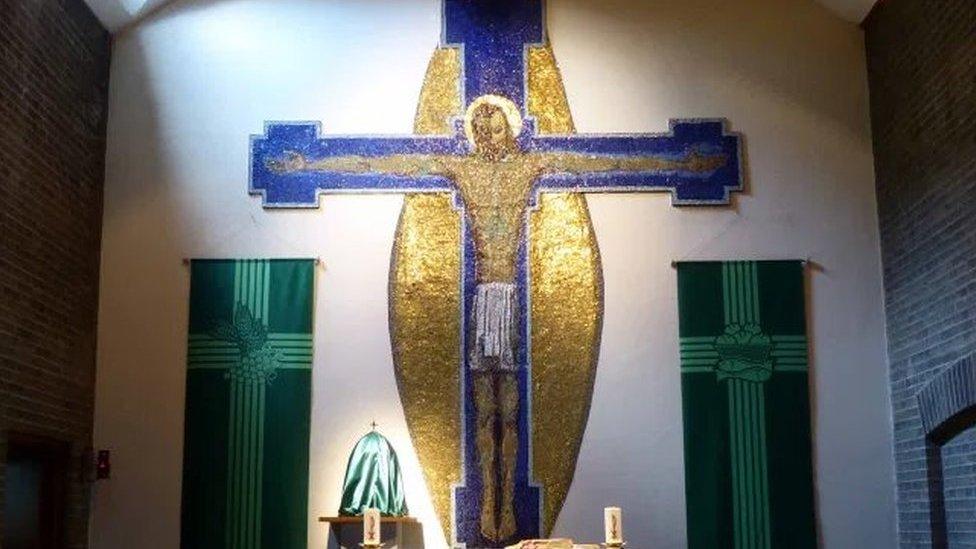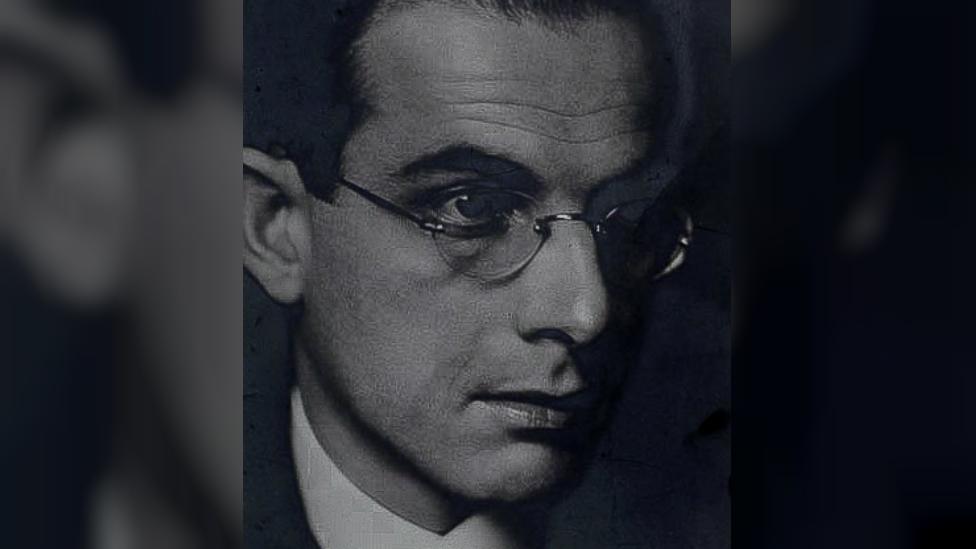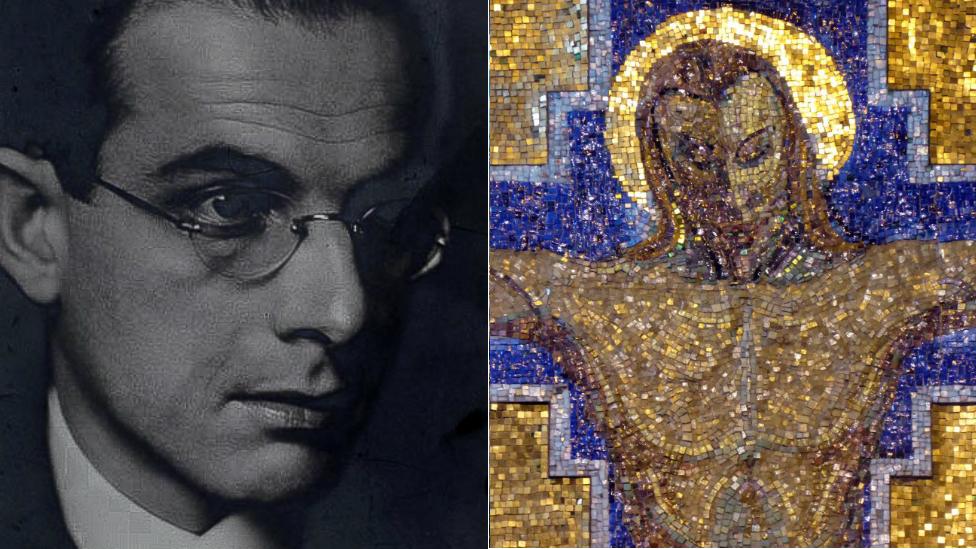One-of-a-kind Oldham church mural that was painted over given listed status
- Published

The Crucifixion depicts the figure of Christ in tiles of gold against a dark blue cross, flanked by a painted Mary and John the Apostle
A "one-of-a-kind" church mural which survived being painted over has been granted Grade II listed status.
George Mayer-Marton's The Crucifixion was awarded the status after a six-year campaign by his relative Nick Braithwaite.
The mosaic and fresco in the Church of the Holy Rosary in Oldham was created after the artist fled Nazi persecution.
Heritage Minister Nigel Huddleston said it was "an important reminder for future generations" of his plight.
The work was created by the Hungarian-Jewish artist in 1955 and depicts the figure of Christ in tiles of gold against a dark blue cross, flanked by a painted Mary and John the Apostle.
The fresco part of the work was painted over with off-white paint in the 1980s and, after the Roman Catholic church in Fitton Hill closed as part of a diocese reorganisation in 2017, it suffered some instances of vandalism.
Historic England said trials in 2019 and 2021 showed it was in good condition "beneath the emulsion, a pinkish plaster skim and a blue repaint applied to make the original colour brighter".

The frescos either side of the mosaic were painted over in the 1980s
The organisation said the work was "highly unusual and possibly unique in this country".
It said the piece was a "striking aesthetic combination of Neo-Byzantine mosaic and modernist Cubist-influenced fresco inventively applied to traditional Christian iconography in a deeply personal evocation of suffering and redemption".
It added that as the mural was "physically and symbolically integrated" into the church's design, both it and the building had received listed status.
Mr Huddleston said the "stunning" work deserved to be listed, so as to "protect the one-of-a-kind mural and serve as an important reminder for future generations of [the artist's] escape from Nazi persecution".
The church in Fitton Hill was closed as part of a diocese reorganisation in 2017.
At the time, art critics, historians and the artist's great-nephew Nick Braithwaite urged officials to take action, due to the threat of vandalism, theft and redevelopment.
Historic England's Marie Smallwood said Mr Braithwaite deserved "great recognition for galvanising support".

George Mayer-Marton

Born in Hungary in 1897, he served with the Austro-Hungarian army in World War One, before studying art in Vienna and Munich
Became a senior figure in the Hagenbund, a leading society of Viennese artists, but fled Austria in 1938 to escape Nazi persecution
Worked as a lecturer for the Arts Council, before joining Liverpool College of Art in 1952 as part of a staff who would go on to teach future Beatles John Lennon and Stuart Sutcliffe
Designed murals and mosaics for schools and churches, including the Pentecost mosaic in Liverpool Metropolitan Cathedral, until his death in 1960
His work is held by many British galleries, including The Derby Museum, National Museum of Wales, Cardiff and the Walker Art Gallery in Liverpool.
Source: British Museum, external

Why not follow BBC North West on Facebook, external, Twitter, external and Instagram, external? You can also send story ideas to northwest.newsonline@bbc.co.uk, external
Related topics
- Published18 August 2020
